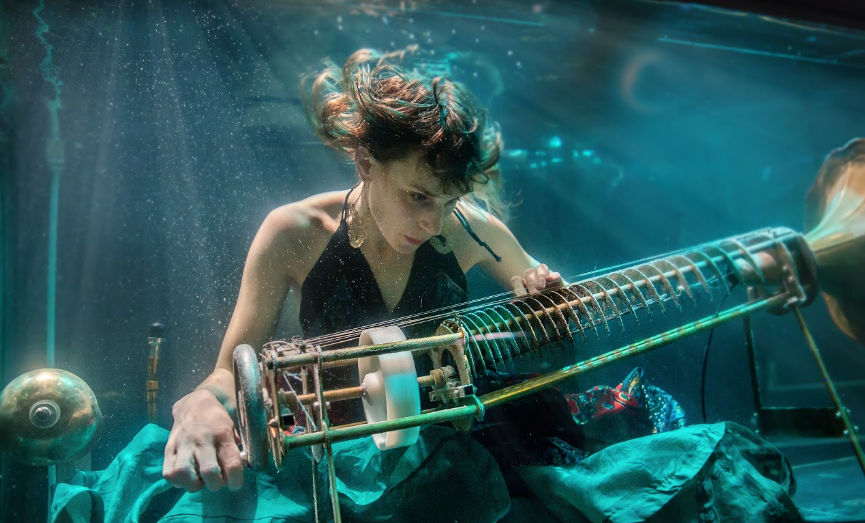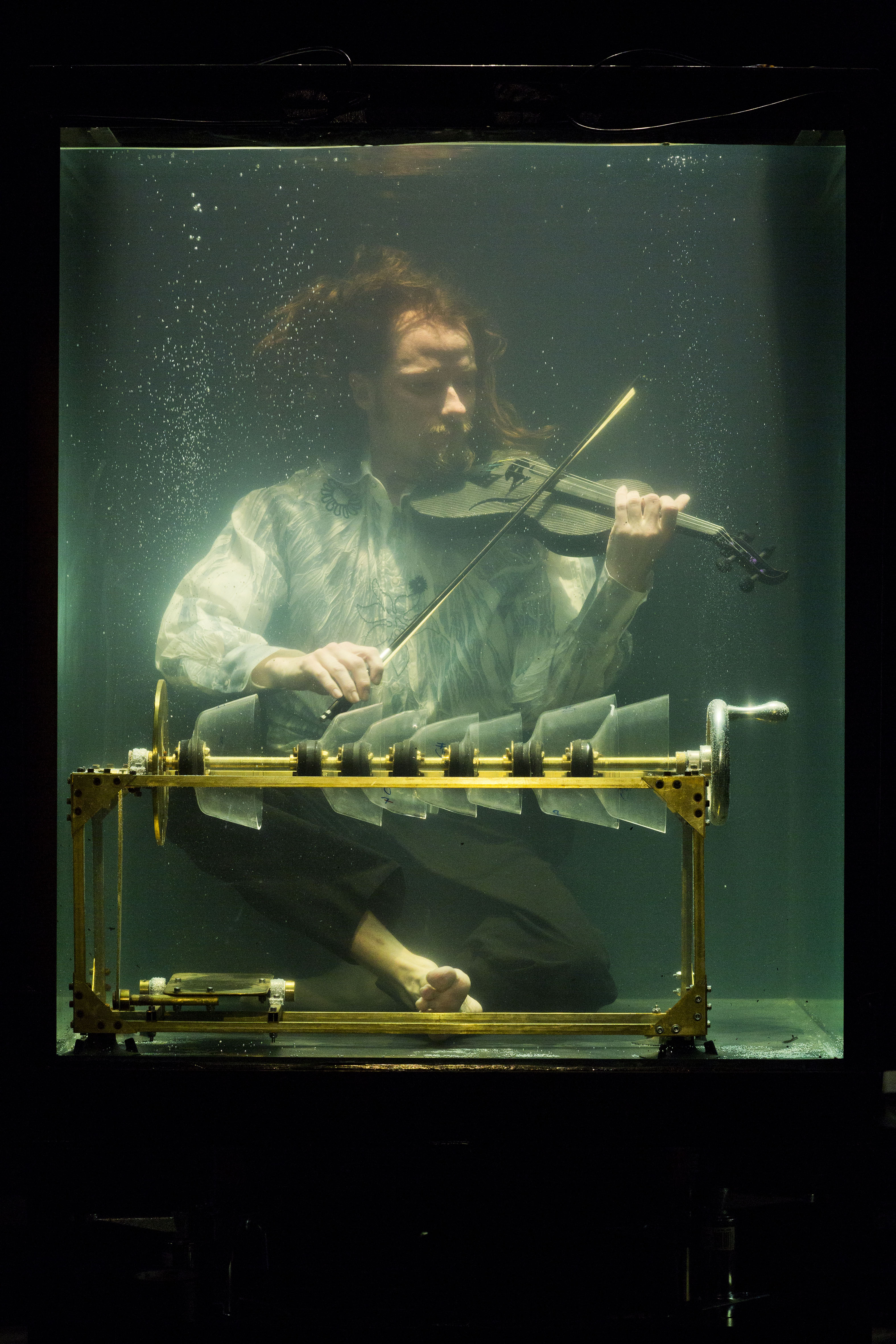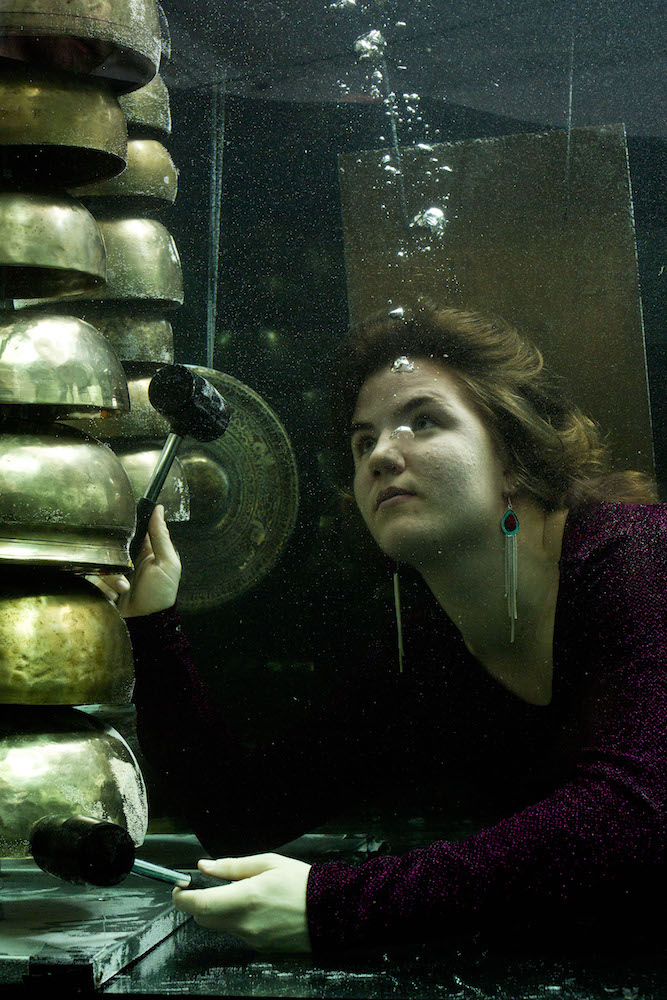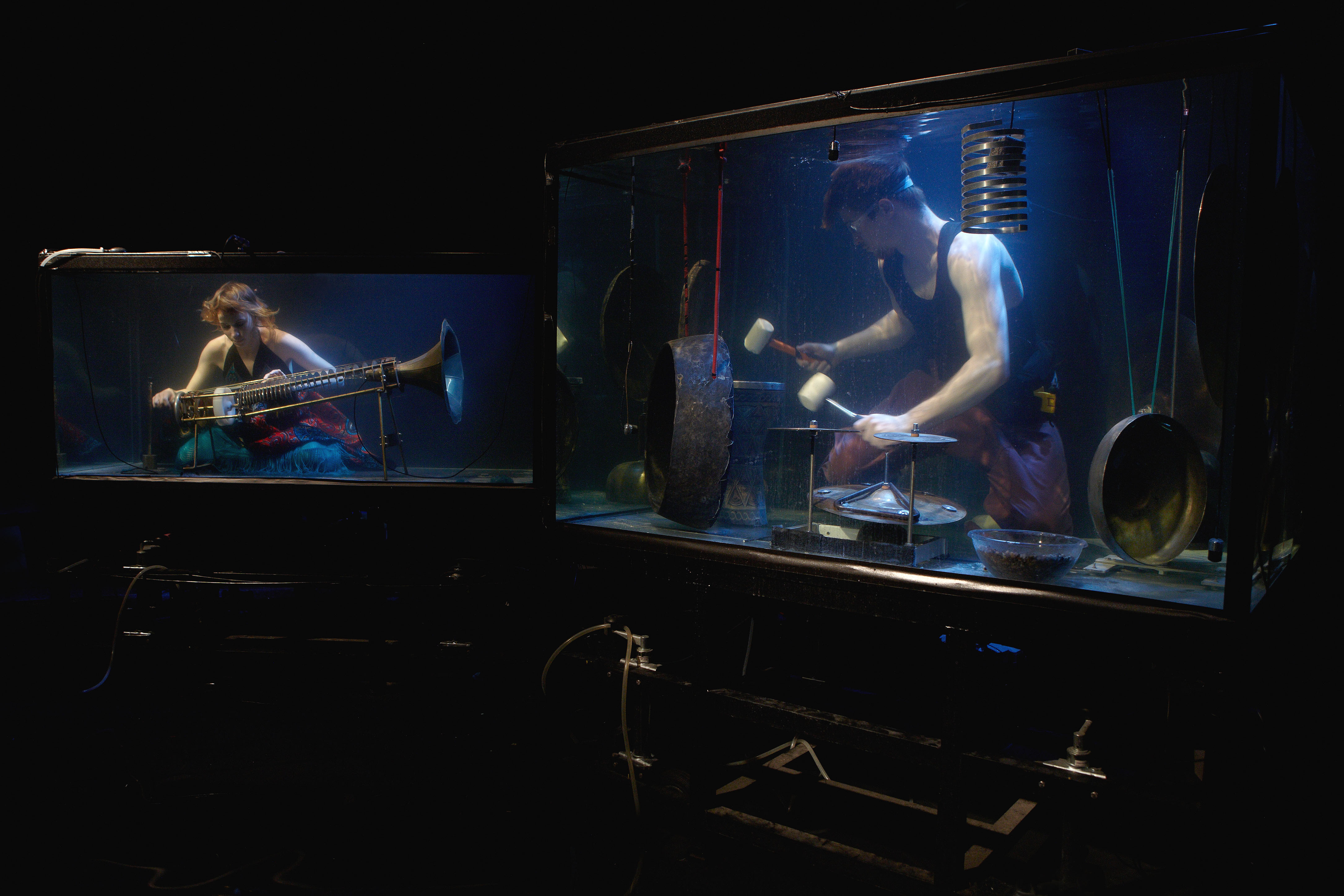Carriageworks, Sydney
January 7, 2018
The sound of trickling, lapping water coloured the darkness of Bay 17 at Sydney’s Carriageworks for the opening of Between Music’s AquaSonic. Low humming and tenebrous rumbles gave texture to the space, otherworldly dissonances subtly emerging and receding as if borne on mysterious tides. The audience’s eyes adjusted – or the lights gradually came up – on a violinist submerged in an aquarium tank, his instrument scratching a gentle, innocent melody under the water, the sound picked up and amplified.
 Nanna Bech plays the rotacorda. Photo © Charlotte de Miranda
Nanna Bech plays the rotacorda. Photo © Charlotte de Miranda
Billed as “the world’s first underwater band”, Danish ensemble Between Music are certainly not wet behind the ears – they spent ten years developing AquaSonic, inventing and refining instruments and techniques that can be performed underwater, creating a unique and innovative sound palette from which to create their music. Arrayed across five tanks of various size and shape – the tanks themselves resonating chambers, becoming an extension of the instruments they hold – the musicians drew the audience into this new aquatic world of sound, in a strange and fantastic performance unlike any other.
 Robert Karlsson plays the violin, with crystallophone at his feet. Photo © Jens Peter Engedal
Robert Karlsson plays the violin, with crystallophone at his feet. Photo © Jens Peter Engedal
The violin, played by Between Music’s Innovation Director Robert Karlsson, was one of the few conventional musical instruments used, its tone scratchy and muted beneath the surface of the water. Karlsson was joined by a collection of drums (Martin Poulsen) and percussion instruments (Dea Marie Kjeldsen), booming and resonant in this new environment, gong-like pitched-percussion building otherworldly ostinatos. Nanna Bech turned the crank of the moaning rotacorda, a specially designed underwater hurdy-gurdy-like instrument.
In addition to violin, Karlsson played the crystallophone, which was inspired by Benjamin Franklin’s glass harmonica and emitted an ethereal high-pitched shimmer, not unlike the Asian singing bowls whose clear-toned sound cut through the water with remarkable ease.
 Dea Marie Kjeldsen. Photo © Jens Peter Engedal
Dea Marie Kjeldsen. Photo © Jens Peter Engedal
The music the band created played to the strength of these instruments, building ostinatos and repeated figures over which the melodic instruments weaved and soared. A deep gong became a resounding bass drum while a smaller drum with a complex timbre fulfilled the function of a snare drum in the driving passages.
Artistic Director Laila Skovmand joined the ensemble at first in a solo outing – singing into a bowl of water, the warbling sound reflected in ribbons of light streaming over her red gown – before submerging herself in the final tank to sing underwater, her throaty tone joining that of Nanna Bech’s to float above the instrumentalists. Skovmand also played hydraulophone – an organ-like instrument controlled by the flow of water – and joined the ensemble in creating skittering, whizzing pitches by dragging hands and fingertips across the wet glass of her tank.
The musicians, fully-clothed in their tanks, breathed in tightly choreographed sequences, giving the performance a sense of ceremony and theatre. However it was Adalsteinn Stefansson’s subtle and effective lighting design that made the show. Pin-pointing sounds and guiding the audience’s attention early in the piece (much of the charm of this performance was in striving to deduce the source of each sonic effect) the lighting played off the water that covered the stage floor, created vivid slow motion silhouettes of the musicians and illuminated shapes in the haze of water mist that fell from the ceiling.
 Nanna Bech on the rotacorda with Morten Poulsen on percussion instruments. Photo © Morten Thun
Nanna Bech on the rotacorda with Morten Poulsen on percussion instruments. Photo © Morten Thun
While there were moments of incredible magic and beauty, some techniques weren’t as effective as others. A number that saw the musicians blowing bubbles – amplified to dramatic percussive resonance – in five gold-lit cylinders, created interesting rhythmic motifs but felt musically under-developed, the climax of flatulent bubble surges drawing giggles from the audience. Likewise, Skovmand’s vocal solo – while effective in drawing the audience’s attention to the production of the sounds she would create later in the tank – felt simplistic compared with the more musically satisfying performances created with the combined ensemble.
At a little under an hour, AquaSonic was a short but wondrous tasting plate of the sounds and music that can be created submerged in water. Part science experiment, part art installation, part concert, Aquasonic is a breath-taking experience that’s well worth dipping a toe in.
AquaSonic plays at Carriageworks as part of the Sydney Festival from January 6 – 9.











Comments
Log in to join the conversation.